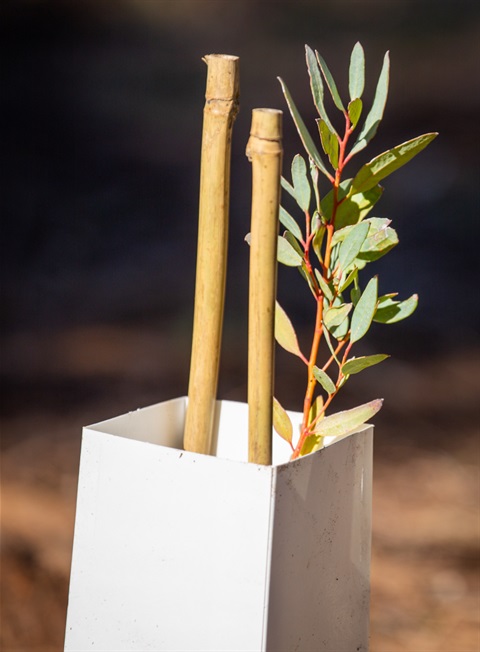Mass seedling planting at Lake Cullulleraine to turn back the clock
Published on 21 June 2018

One of the largest revegetation projects ever undertaken at Lake Cullulleraine will start this winter, in a bid to return the environment in the area closer to what it was before European settlement.
The massive project will be carried out by CO2 Australia, a Service Provider under the Australian Government's 20 Million Trees Program, and an initiative under the National Landcare Program.
The Australian Government's 20 Million Trees Program will plant 20 million trees by 2020 to support local environmental outcomes by improving the extent, connectivity and condition of native vegetation across a wide range of Australian landscapes.
Councillor for Environmental and Farming Sustainability Anthony Cirillo said the project, which will be carried out on Council-managed land, would see about 150,000 native seedlings planted on the north and west sides of Lake Cullulleraine.
“This is a fantastic project that will produce a great outcome for native animals that rely on Indigenous plants for their survival,” Cr Cirillo said.
“By planting native species from the same ecological vegetation classes as those present before European settlement we’ll be taking another step towards preserving our environmental history.”
Council and CO2 Australia have completed ground preparation works, consulting and working with Traditional Owners of Ngintait Country.
An ongoing pest management program at Lake Cullulleraine is needed to control weeds and rabbits which continually degrade the landscape and could threaten the newly-planted seedlings.
Cr Cirillo said several threatened species have been identified at Lake Cullulleraine including the Umbrella Wattle (Acacia oswaldii), Belah (Casuarina pauper), Rosewood (Alectryon oleifolius).
Once the seedlings have been planted, CO2 Australia will actively manage the site for two years, which will include weed and pest management activities.
“This has very much been a collaborative project, working with CO2 Australia as well as the Millewa Carwarp Landcare Group, Millewa Advisory Group and local residents, all of whom have been enthusiastic about this initiative,” Cr Cirillo said.
“We’ve also ensured the works don’t impact on our valuable Indigenous heritage by consulting with local groups to identify Aboriginal culturally sensitive sites and ensure they’re not disturbed.”
Cr Cirillo said the revegetation project highlights the ongoing issue of native vegetation clearing.
“Unfortunately, Victoria has the distinction of having the most native vegetation cleared of any State in Australia,” he said.
“We need to appreciate what’s left on or roadsides, along the river and in our bushland reserves and National Parks, and Lake Cullulleraine is a prime example.”
Cr Cirillo explained that prior to European settlement, Lake Cullulleraine was an ephemeral wetland, only filling during major floods. He said the lake was now permanently full to allow for irrigation storage.
“Over time, the land surrounding the lake has been over-grazed and native vegetation cleared, resulting in significant soil erosion and increased soil salinity,” he said.
“However initiatives such as our revegetation project will help us regain some of that lost vegetation for generations to come.”
This project is supported by CO2 Australia, through funding from the Australian Government’s National Landcare Program.
For more information about the Lake Cullulleraine revegetation project contact CO2 Australia Project Officer Vanessa Oxley on 03 9928 5111 or at info@co2australia.com.au